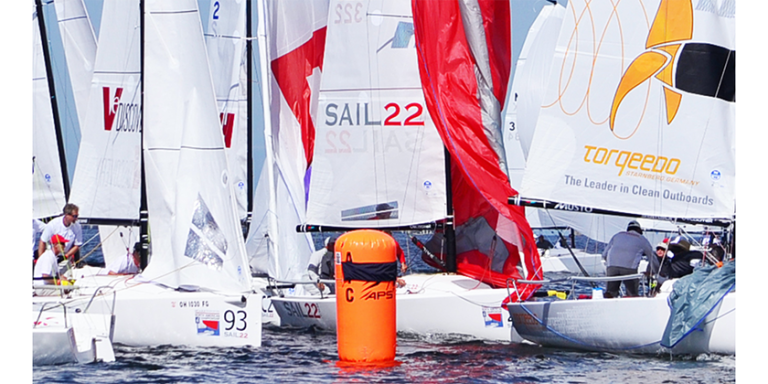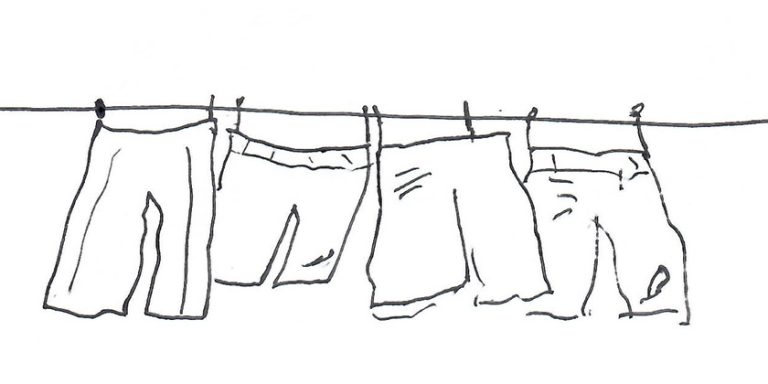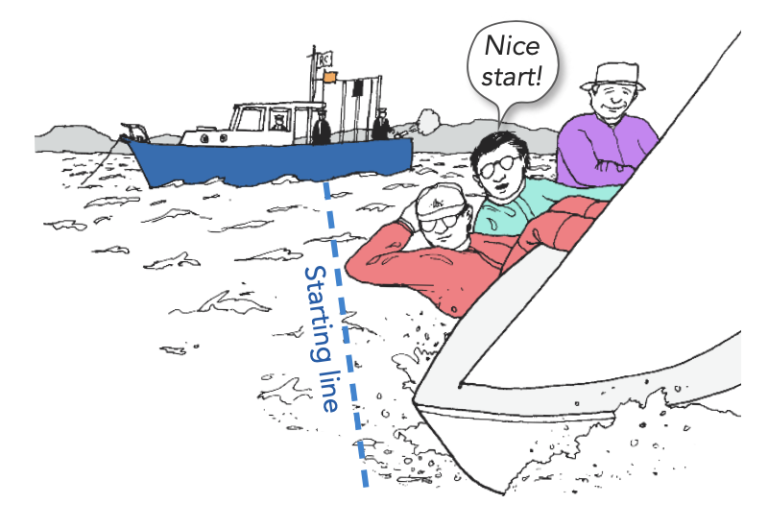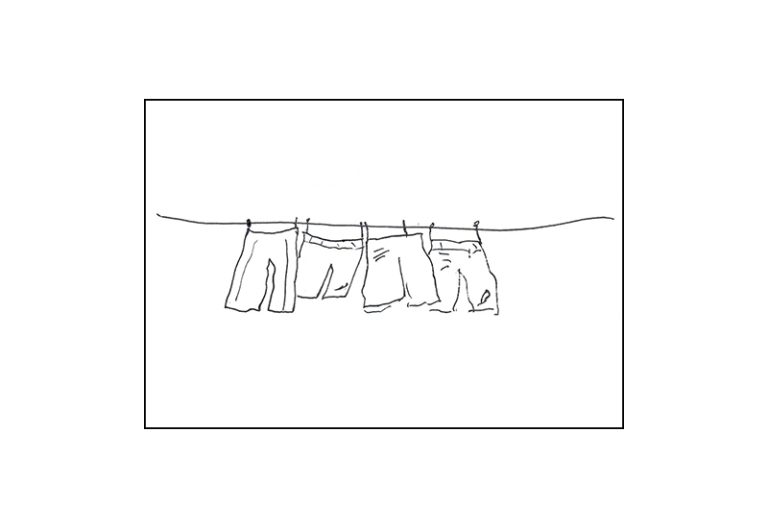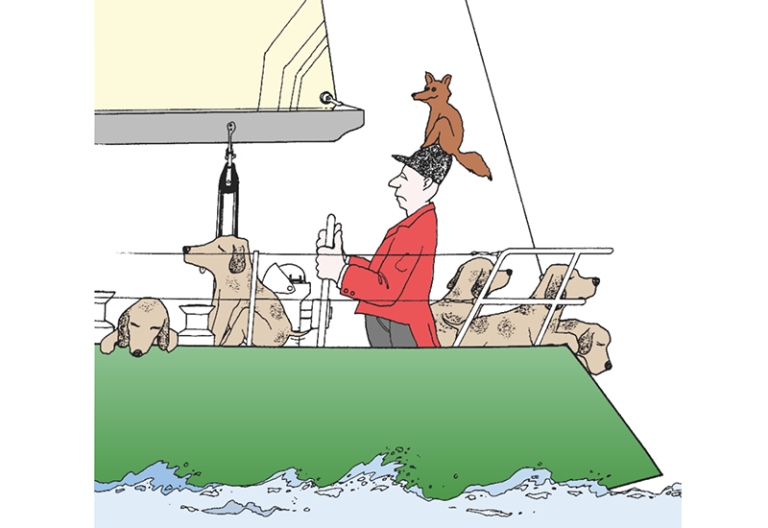Speed & Smarts: Part 3 – Six Ways to Identify a Layline
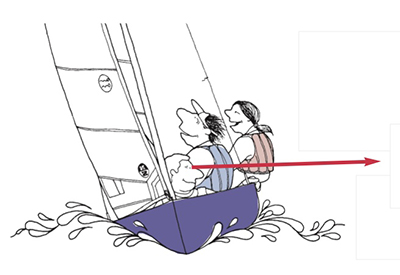
May 3, 2023
In PART 1 and PART 2, they took an initial look at laylines, a good place to start as the season begins.
Before you round any mark you have to get to the layline, so it helps a lot to know where the layline is. To avoid overstanding or understanding (and losing time or distance), find a good method for making consistently accurate layline calls. Here are some tips:
- Avoid long-range laylines. The easiest way to improve your layline calls is by getting closer to the mark before you have to make them. This isn’t always possible, but if you reduce the average distance at which you hit the layline you will have better calls (and better results due to less time spent on laylines).
- Use more than one method. Use two (or more) different layline methods as a check on each other. If two methods produce the same layline, this gives you confidence in your call. If they produce different laylines, use a third method and try to understand why the first two disagreed.
- Be aware of changing conditions. The variables that affect your laylines (wind, waves, current) are always changing. The best way to incorporate these is to be very aware of what’s happening on the racecourse at the moment when you make your layline call. For example, do you expect the wind to increase, decrease or remain the same as you sail to the mark? It’s hard to make a good layline call without considering this kind of information.
1. ‘Eyeball’ the mark
Even if you are using another layline technique, you should always ‘eyeball’ the mark (just as you should ‘eyeball’ every other race-course decision). Taking a good look around helps you consider all relevant factors and prevents silly mistakes. Many sailors have a great feel for laylines simply by looking at the mark, so don’t be afraid to rely on this. Also, many boats have a tacking angle of roughly 80° or 90°, so you’re at the layline when the
mark is slightly forward of abeam. It’s not a bad idea to combine this with an objective approach like using a compass bearing or tacking line.
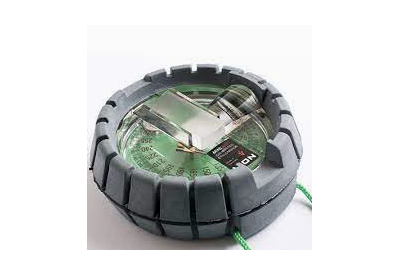 2. Use a compass bearing
2. Use a compass bearing
The use of a compass gives you a more objective and consistent approach to calling laylines. Take note of your average heading on each tack while you are sailing up the beat. Then, while you are looking at the mark, use your heading from the opposite tack to judge your layline.
A compass mounted on your boat’s centerline is great for getting your heading on each tack, but it’s usually not so good for sighting the mark abeam. The best tool for this is a hand-bearing compass, which can be worn around the neck of the tactician or other crewmember.
Remember that a compass layline is based on times in the past when you were sailing on that tack. Conditions will probably be at least a little different when you make a layline call, so don’t blindly use the old compass number.
3. Use a range on shore
Once in a while it’s possible to use a range with an object on shore to identify the windward (or leeward) mark laylines. However, you need a few conditions in order to make this work:
- A shoreline behind the windward or leeward mark!
- A chance to sail up the course and get a layline range before you are racing. This method might work well when sailing multiple races on a fairly short course.
- A relatively steady wind. A range on shore will give you a very precise layline that is accurate when you get it before the race. But if conditions change very much, that layline sight will be worthless.
4. Use the angle of other boats
The angles of other boats tell you a lot about the wind in which they are sailing, so keep a close eye on them while racing. The easiest way to make a layline call is by looking down the centerline of boats on the opposite tack as you cross behind them near the layline. You can also use the angle of any other boat on the opposite tack to help estimate your sailing angle toward the mark.
Remember that looking at the angle of other boats will not tell you how your layline will be affected by current or leeway (unless you see you see boats pinching and hitting the windward mark!). Also, the best information comes from watching boats that are identical to yours, of course, because they have similar tacking angles.
5. 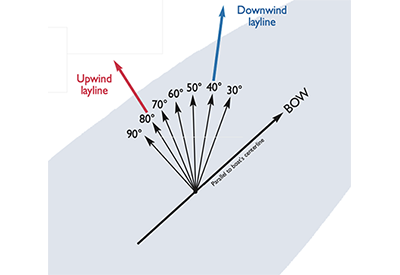 Use “tacking lines”
Use “tacking lines”
This is my favorite technique on boats that are big enough to fit tacking lines on their deck. To make tacking lines work, you need to know your boat’s tacking angle in the existing wind and sea conditions. You can
determine this by recording your headings on each tack and finding their difference. Then sight along your tacking lines on the windward side to identify when you’re on the layline.
For example, if you tack through 80°, your heading on the opposite tack will be 80° from your current course. When the 80° tacking line is pointing at the mark, you are on the layline to the windward mark.
Tacking lines also work for downwind laylines. If your jibing angle is 40° use that line on your leeward side to sight the leeward mark.
Next time: Part 4 – Five familiar layline dilemmas
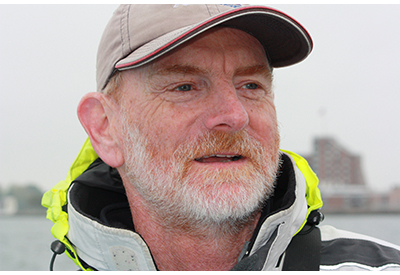 Dave Dellenbaugh is the publisher, editor and author of Speed & Smarts, the racing newsletter. He was the tactician and starting helmsman on America3 during her successful defense of the America’s Cup in 1992 and sailed in three other America’s Cup campaigns from 1986 to 2007. David is also two-time winner of the Canada’s Cup, a Lightning world champion, two-time Congressional Cup winner, seven-time Thistle national champion, three-time Prince of Wales U.S. match racing champion and past winner of the U.S. Team Racing Championship for the Hinman Trophy. He is currently a member of the US Sailing Racing Rules Committee (and was its chairman from 2005-2008).
Dave Dellenbaugh is the publisher, editor and author of Speed & Smarts, the racing newsletter. He was the tactician and starting helmsman on America3 during her successful defense of the America’s Cup in 1992 and sailed in three other America’s Cup campaigns from 1986 to 2007. David is also two-time winner of the Canada’s Cup, a Lightning world champion, two-time Congressional Cup winner, seven-time Thistle national champion, three-time Prince of Wales U.S. match racing champion and past winner of the U.S. Team Racing Championship for the Hinman Trophy. He is currently a member of the US Sailing Racing Rules Committee (and was its chairman from 2005-2008).
You can subscribe to the Speed & Smarts newsletter HERE.

